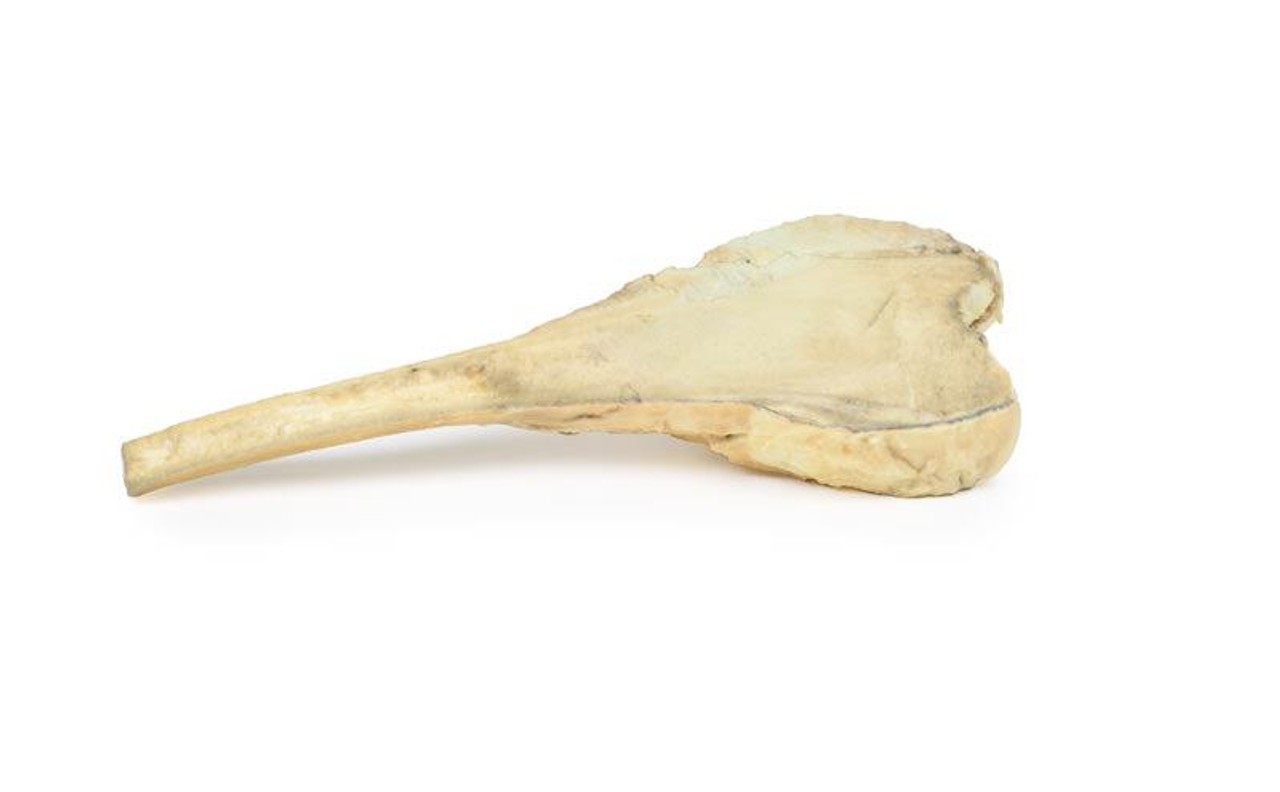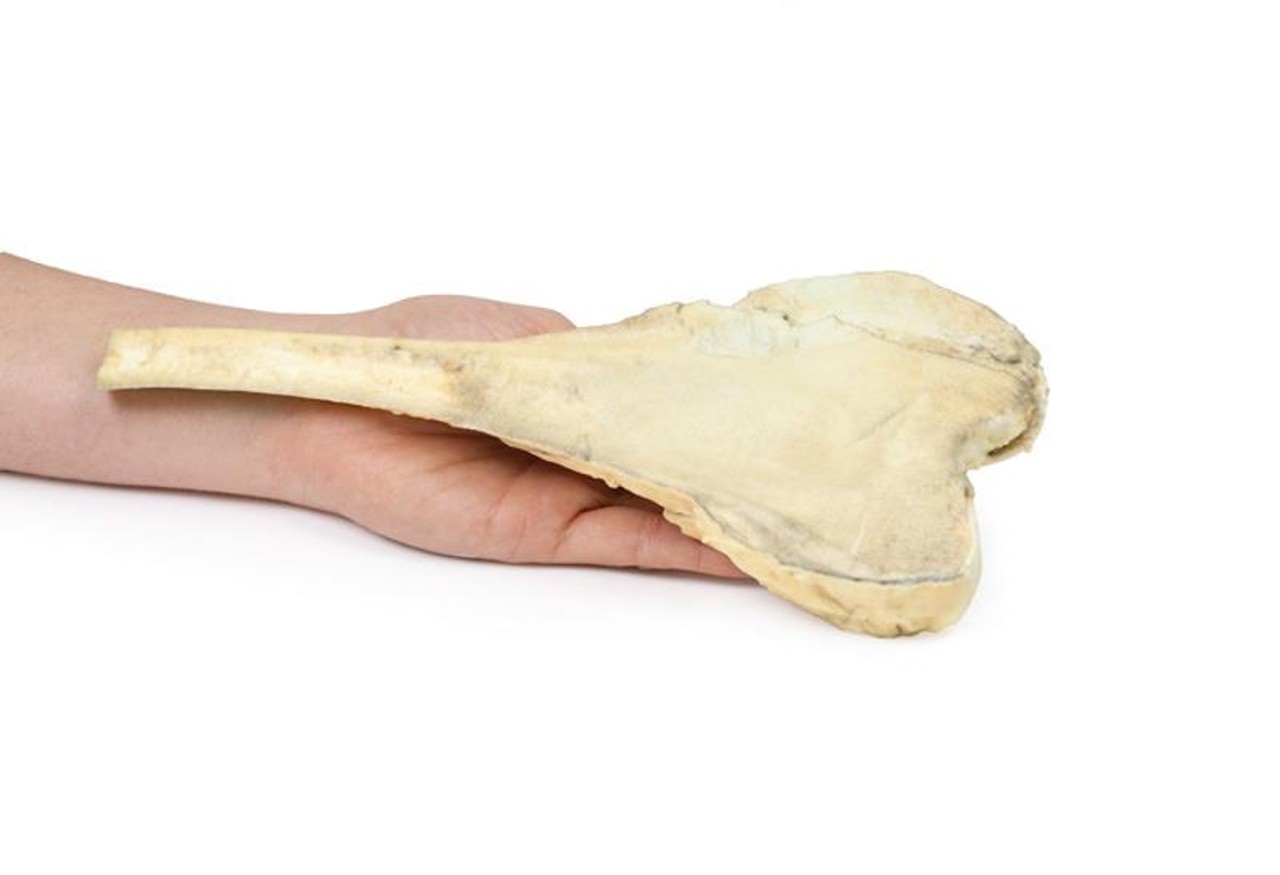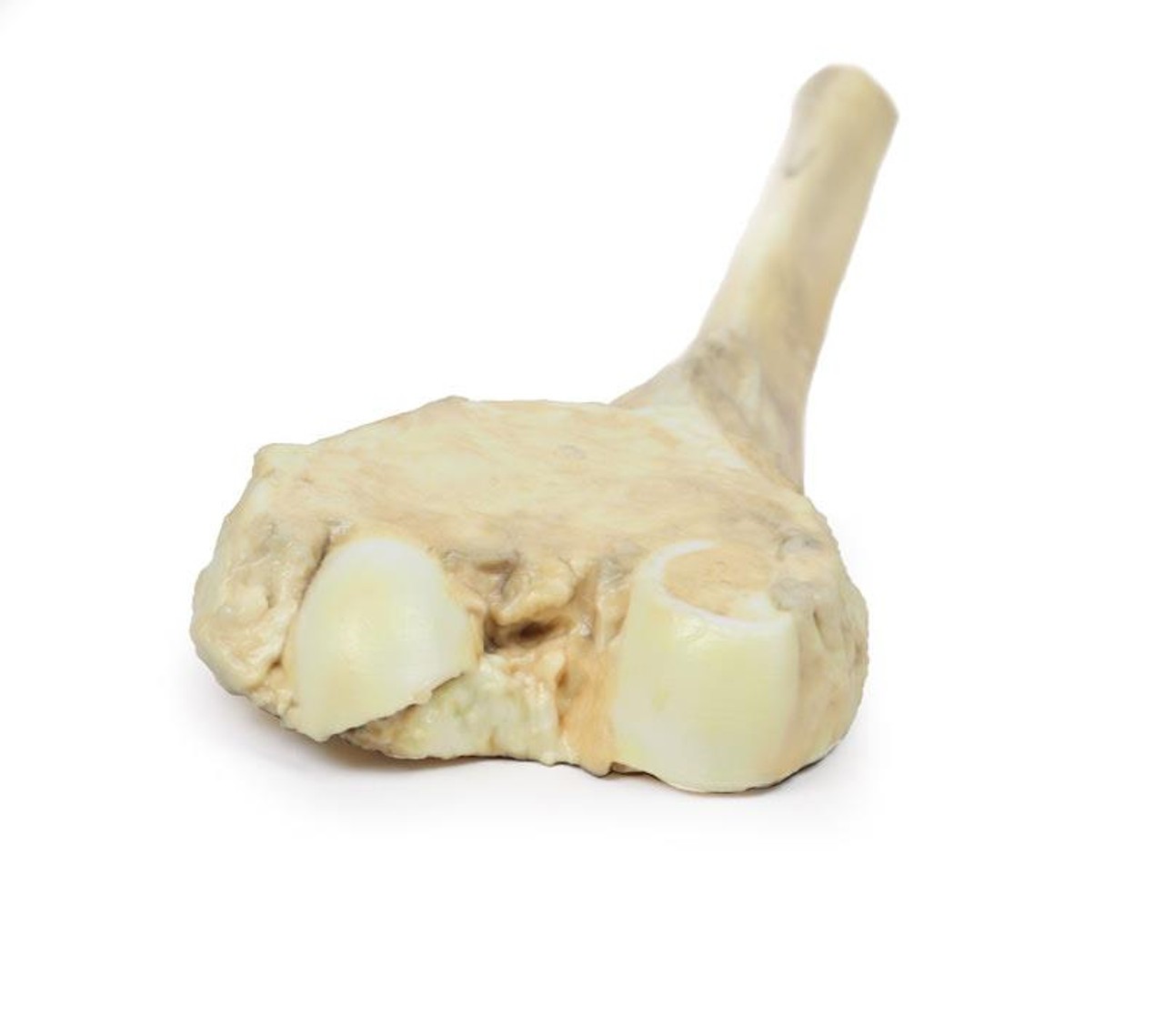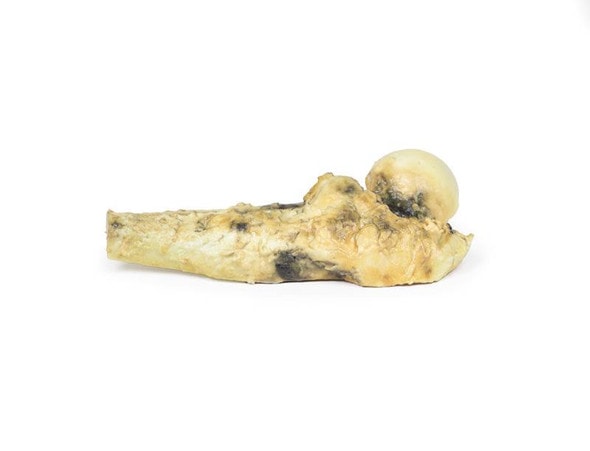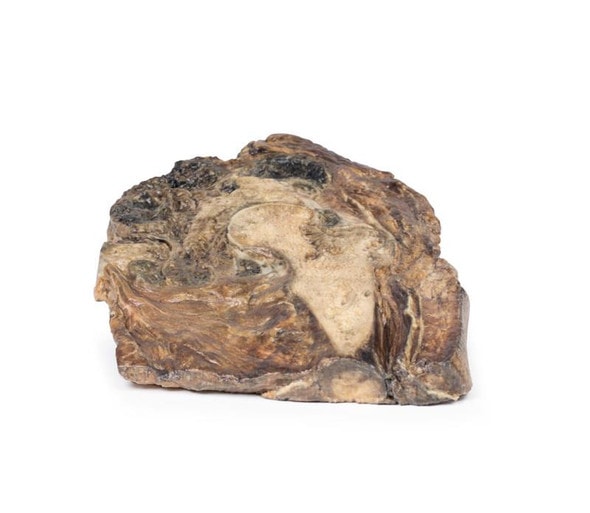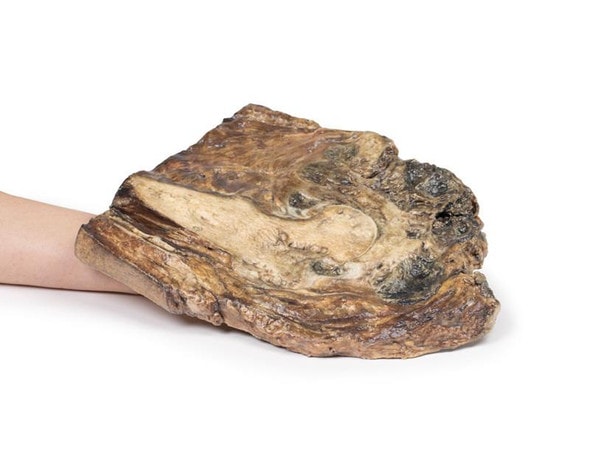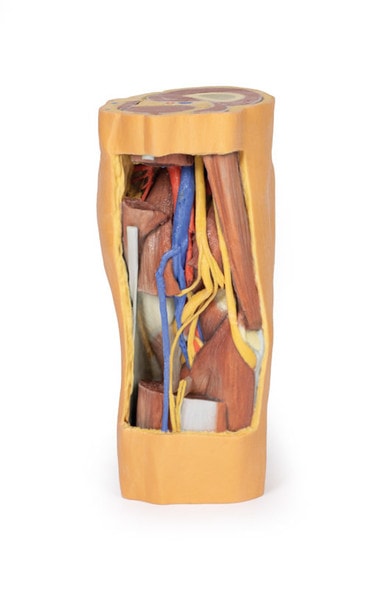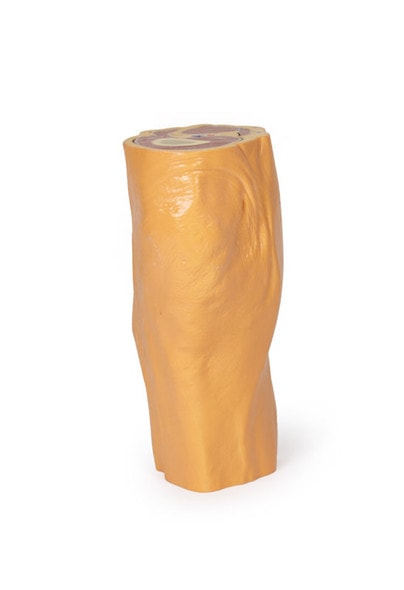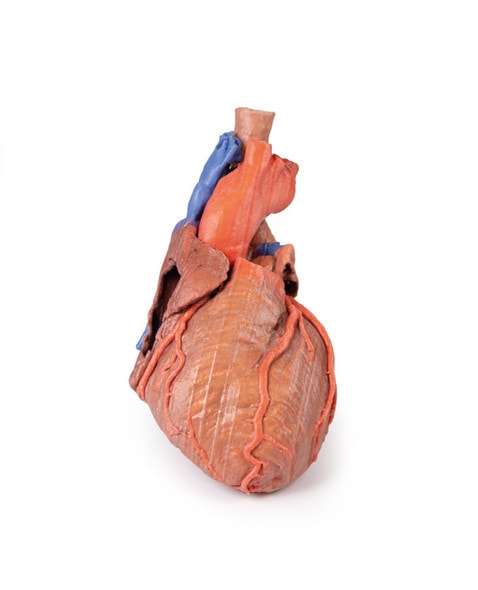Description
Developed from real patient case study specimens, the 3D printed anatomy model pathology series introduces an unmatched level of realism in human anatomy models. Each 3D printed anatomy model is a high-fidelity replica of a human cadaveric specimen, focusing on the key morbidity presentations that led to the deceasement of the patient. With advances in 3D printing materials and techniques, these stories can come to life in an ethical, consistently reproduceable, and easy to handle format. Ideal for the most advanced anatomical and pathological study, and backed by authentic case study details, students, instructors, and experts alike will discover a new level of anatomical study with the 3D printed anatomy model pathology series.
Clinical History
A 16-year old male presented with a 3-month history of increasingly swollen and painful right knee. On examination, there was a palpable tender swelling above the right knee. Blood test showed a raised Alkaline Phosphatase level. A knee x-ray showed periosteal reactive changes in the distal femur suspicious for a bone malignancy. The patient then underwent staging CT and MRI evaluation of the right leg. He underwent adjuvant chemotherapy prior to resection of his right femur. He made a full recovery.
Pathology
The specimen is the patient's excised distal femur. On the cut surface, there is a large pale infiltrating tumor, 10 cm in greatest diameter, extending through the periosteum near the articular surface. This is an osteosarcoma of the femur.
Further Information
Osteosarcomas are a malignant tumor of bones that are characterized by the production of osteoid matrix or immature bone. It is the most common primary malignancy of bone. Most occur in the distal femur with the tibia and humerus being the most frequent sites affected. Men are more commonly affected than women. They occur in a bimodal age distribution, with most occurring in children and adolescents under 20 years of age and the second peak occurring in older adults over 60.
Secondary osteosarcomas are more common in older patients. Secondary osteosarcomas occur in patient's bones with predisposing conditions such as Paget's disease, bone infarcts and previous irradiation. Mutations in tumor suppressors and oncogenes, such as RB, TP53 and INK4a have been shown in osteosarcomas.
Osteosarcomas usually present with painful, enlarging masses. Pathological fractures can also be the first presenting complaint. Constitutional symptoms are usually not present. Alkaline phosphatase and lactate dehydrogenase may be elevated on blood tests. X-rays can show features of bone destruction, a mass or signs of a periosteal reaction, such as a sunburst appearance or triangular shells of reactive bone (Codman's Triangle). MRI of the affected bone is used to evaluate local staging of the tumor while CT of the body is used to evaluate for distant spread. The tumor may be biopsied in some cases.
The lungs are the most common site for distant metastases followed by the bones and brain. Treatment involves neoadjuvant chemotherapy followed by surgery. 5-year survival rate for localized osteosarcoma is 60-70% but this drops to <20% in patients with distant metastases.
Advantages of 3D Printed Anatomical Models
- 3D printed anatomical models are the most anatomically accurate examples of human anatomy because they are based on real human specimens.
- Avoid the ethical complications and complex handling, storage, and documentation requirements with 3D printed models when compared to human cadaveric specimens.
- 3D printed anatomy models are far less expensive than real human cadaveric specimens.
- Reproducibility and consistency allow for standardization of education and faster availability of models when you need them.
- Customization options are available for specific applications or educational needs. Enlargement, highlighting of specific anatomical structures, cutaway views, and more are just some of the customizations available.
Disadvantages of Human Cadavers
- Access to cadavers can be problematic and ethical complications are hard to avoid. Many countries cannot access cadavers for cultural and religious reasons.
- Human cadavers are costly to procure and require expensive storage facilities and dedicated staff to maintain them. Maintenance of the facility alone is costly.
- The cost to develop a cadaver lab or plastination technique is extremely high. Those funds could purchase hundreds of easy to handle, realistic 3D printed anatomical replicas.
- Wet specimens cannot be used in uncertified labs. Certification is expensive and time-consuming.
- Exposure to preservation fluids and chemicals is known to cause long-term health problems for lab workers and students. 3D printed anatomical replicas are safe to handle without any special equipment.
- Lack of reuse and reproducibility. If a dissection mistake is made, a new specimen has to be used and students have to start all over again.
Disadvantages of Plastinated Specimens
- Like real human cadaveric specimens, plastinated models are extremely expensive.
- Plastinated specimens still require real human samples and pose the same ethical issues as real human cadavers.
- The plastination process is extensive and takes months or longer to complete. 3D printed human anatomical models are available in a fraction of the time.
- Plastinated models, like human cadavers, are one of a kind and can only showcase one presentation of human anatomy.
Advanced 3D Printing Techniques for Superior Results
- Vibrant color offering with 10 million colors
- UV-curable inkjet printing
- High quality 3D printing that can create products that are delicate, extremely precise, and incredibly realistic
- To improve durability of fragile, thin, and delicate arteries, veins or vessels, a clear support material is printed in key areas. This makes the models robust so they can be handled by students easily.

